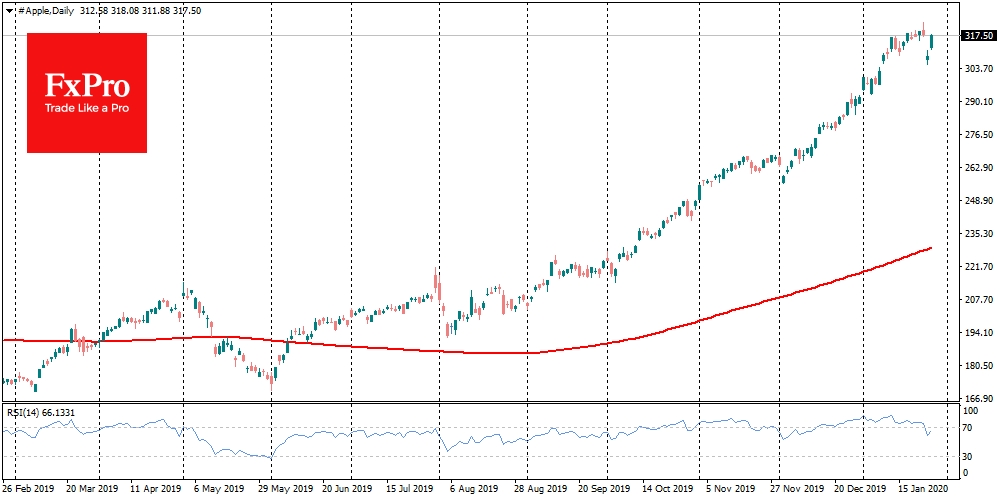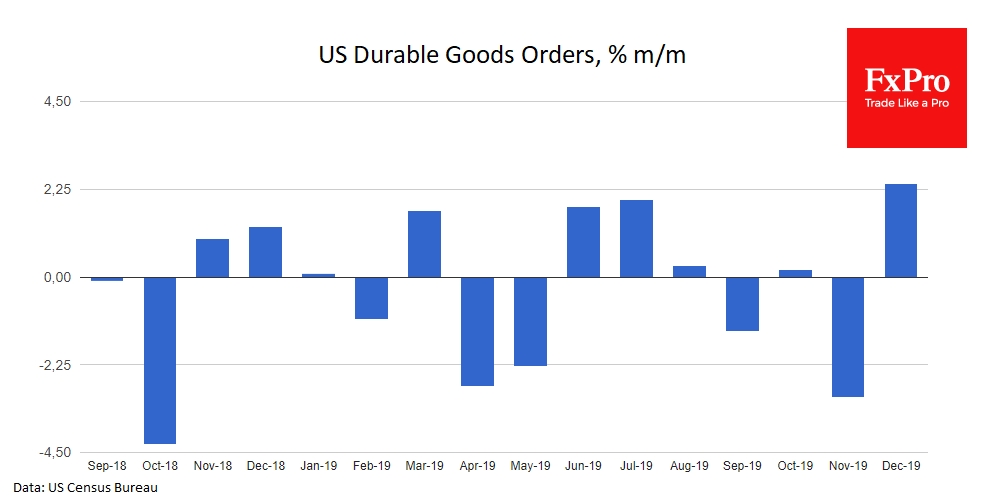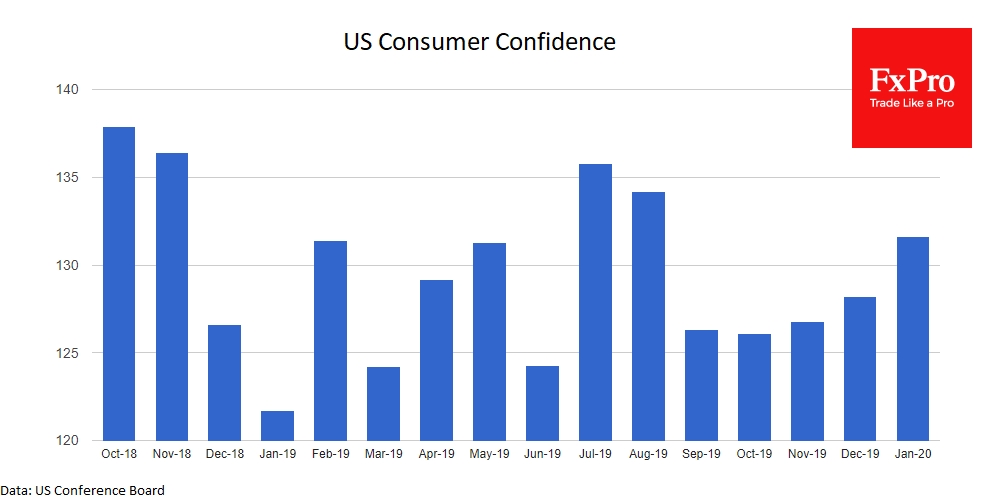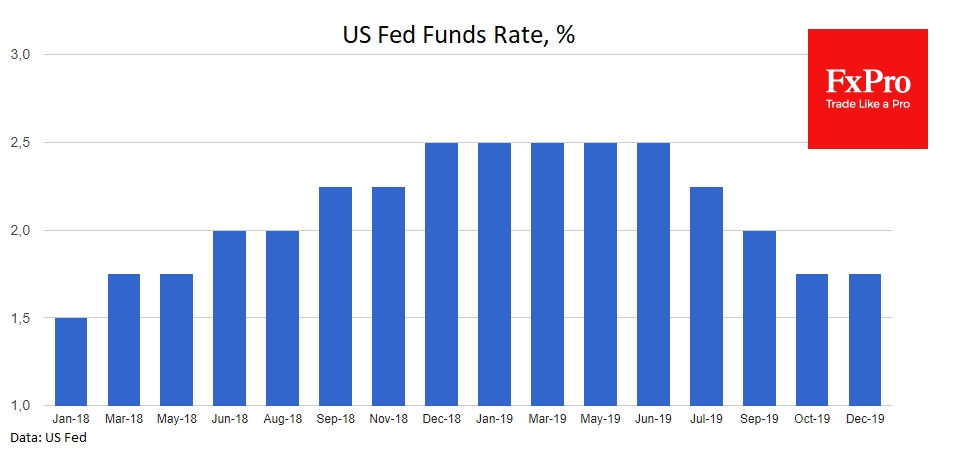Markets continue to carefully buy stocks that have slipped through the fears of coronavirus spreading from China. Robust data from the US helped to change the sentiment of market participants, from positive company reports to macroeconomic indicators exceeding expectations.
Futures on S&P 500 grew for the second day, adding 1.4%. The Japanese Nikkei 225 and Euro Stoxx 50 are in the green zone also, although they are far from fully recovered from the decline since the start of last week. Hong Kong’s Hang Seng, which opened after the holiday break, is in the red as markets try to price in the earlier overall market worries on the impact of coronavirus.

Among American companies’ earnings stories, it is worth mentioning the impressive performance of Apple. For the latest quarter, the company achieved record sales and profits. The newest report confirmed the accuracy of the strategy, which helped to double the company’s capitalization. It was published after the market closed and managed to exceed expectations of market analysts on all key indicators of sales of goods. At some point post-trade, the stock’s value reached a record of $325.8, while its capitalization level exceeded $1.5 trillion, later slightly adjusted under this figure.
Investors were afraid that the coronavirus outbreak would harm the forecasts, as a part of Apple factories in Shanghai will stay closed two weeks longer due to the virus outbreak. So far, however, this has only led to a broader range of the company’s forecasts but has not led to concerns about supplies. Microsoft (NASDAQ:MSFT) and Alphabet (NASDAQ:GOOGL) (the parent company of Google) also showed an increase after Apple. AMD and Starbucks (NASDAQ:SBUX) also beat average earnings expectations.

Among macroeconomic factors, it is worth noting stronger than expected orders for durable goods. These data often serve as a reliable indicator of companies’ confidence: business will avoid significant expenses if it fears a slowdown in demand. However, there is a fly in the ointment here. Due to the crisis around Boeing, airline orders declined to 2009 levels.
There is also a steady increase in the consumer confidence index, which has recovered to August levels and is growing for the third month in a row in response to the Fed’s rate cuts. The US central bank also appears to be complicit in the Fed Richmond Manufacturing Index’s rise to a high from September 2018 and the S&P/Case-Shiller acceleration of housing prices.

Much of the improvement in macroeconomic indicators owes to the Fed’s policy easing, that’s why this makes sense to listen to the Fed’s remarks later today even more cautiously. The US central bank figuratively filled the bowl with punch, extending the party in the markets. And if one looks at the continuing liquidity injections in the repo market and the balance growth, he or she can say that the bowl continues to be regularly replenished.
The Fed has the power to remove this punch bowl, and then markets may face a repeat of the recession at the end of 2018 when expectations of tightening policy led to a 20% correction of the major U.S. stock indices.

The FxPro Analyst Team
Which stock should you buy in your very next trade?
With valuations skyrocketing in 2024, many investors are uneasy putting more money into stocks. Unsure where to invest next? Get access to our proven portfolios and discover high-potential opportunities.
In 2024 alone, ProPicks AI identified 2 stocks that surged over 150%, 4 additional stocks that leaped over 30%, and 3 more that climbed over 25%. That's an impressive track record.
With portfolios tailored for Dow stocks, S&P stocks, Tech stocks, and Mid Cap stocks, you can explore various wealth-building strategies.
